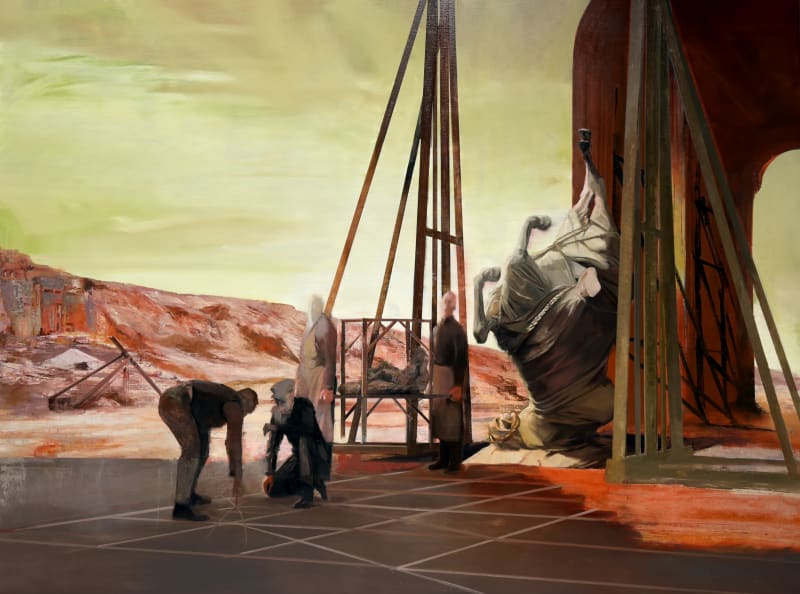As a painter who seeks, in his own words, 'to make sense of the things we can't see', Tim Kent is well suited to a world in which many images are invisible to the unassisted human eye. Nonhuman vision, exemplified by QR codes, is the same world in which drone technology and 'intelligent' weapons use operational images to fulfil military objectives. By injecting his new series with the visual grammar of military targeting programs, Kent acknowledges that Western paintings have also been vehicles for regimes of oversight.
The paintings in Histories in Flux fuse neoclassical canons and contemporary circuits of surveillance by subjecting art-historical tropes - reclining nudes and equestrian monuments - to forms of digital visualisation. A trio of paintings, Odalisque (2023), Inclinations (2024) and The Reproduction's Gaze (2024), integrate the figure from Ingres's famous La Grande Odalisque (1814) into a painted dot-matrix, whose machinic precision elides seamlessly with the works' slick surfaces. Elsewhere, Kent's tiled pavement - more vector graphic than Renaissance grid - congeals with thick currents of oil that seem to disrupt any sense of coherent time or space. Procession (2024) halts the march of its headless spectre-courtiers via a controlled explosion of dark pigment, while the irradiated landscape of Past Again and Again (2024) reprises the humanoid figures and towering arcades of Giorgio de Chirico, whose shadows seemed always out of step with time.

